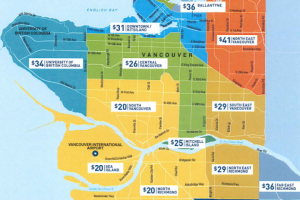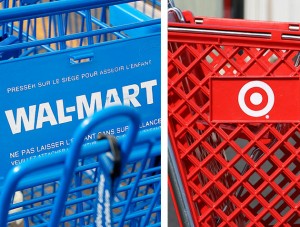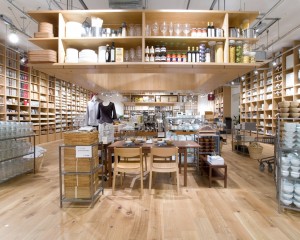In light of Starbucks’ announcement to launch a delivery service to account for their recent decline in sales, Matthew’s blog post on RGB Social provides an insightful response, as he believes that by initiating the new delivery service, Starbucks will add to the customer experience, and develop client relationships by providing a change to their brand experience, which consequently ties in with what we learned in class 8 on brand positioning and value propositions.
Unlike Matthew, I feel that even if Starbucks does introduce this new delivery system they will not necessarily provide a significantly better customer experience. Starbucks’ main point of difference and value proposition lies in their ability to provide excellent customer service and the perfect environment for a quick meeting or chat.
If customers simply ordered by delivery, they would be forgoing the whole experience of walking in the store and interacting with the employees, and in theory only be getting the coffee. Coffee shops in history were not a place necessarily made just to drink coffee, but more as a meeting place for people to have meaningful intellectual conversations in. Though that idea has shifted over the years, it still serves as a place for people to rewind after a long day and meet up with friends or clients. I believe that people do not go to Starbucks because their coffee is “incomparable” to other shops, but more so for the experience itself. So would people be willing to pay the additional delivery fee on top of the already pricer price just to drink their maybe now “cold” coffee at home? At least I would not. If people did not care about the experience at all, they might as well just invest in a good coffee maker.
delivery, they would be forgoing the whole experience of walking in the store and interacting with the employees, and in theory only be getting the coffee. Coffee shops in history were not a place necessarily made just to drink coffee, but more as a meeting place for people to have meaningful intellectual conversations in. Though that idea has shifted over the years, it still serves as a place for people to rewind after a long day and meet up with friends or clients. I believe that people do not go to Starbucks because their coffee is “incomparable” to other shops, but more so for the experience itself. So would people be willing to pay the additional delivery fee on top of the already pricer price just to drink their maybe now “cold” coffee at home? At least I would not. If people did not care about the experience at all, they might as well just invest in a good coffee maker.
References:
http://blog.rgbsocial.com/2014/11/04/what-starbucks-delivery-service-has-to-do-with-storytelling-customer-experience-and-social-media/
Picture from: https://c1.staticflickr.com/3/2182/5696698102_ba3bdcdf60.jpg


 ptember 21 to sign a treaty in order to put a final stop on the proposal. The treaty is said to address the fear of rising cancer rates near the Alberta oil sands. This article is of direct correlation to how First Nations can serve as an external factor that can significantly influence an organization’s business plan, as many clans hold substantial political power. The article
ptember 21 to sign a treaty in order to put a final stop on the proposal. The treaty is said to address the fear of rising cancer rates near the Alberta oil sands. This article is of direct correlation to how First Nations can serve as an external factor that can significantly influence an organization’s business plan, as many clans hold substantial political power. The article 

 on most of their stores still look the same as they did ten years ago. This alone gives consumers little incentive to shop there given the atmosphere and lack of selection, since competitors like Hudson’s Bay and Target can probably offer better and more varied things with minimal price difference. Even successful businesses, like Sears, need to constantly undergo changes in accordance with the ever-changing consumer tastes in order to become successful even as time passes by.
on most of their stores still look the same as they did ten years ago. This alone gives consumers little incentive to shop there given the atmosphere and lack of selection, since competitors like Hudson’s Bay and Target can probably offer better and more varied things with minimal price difference. Even successful businesses, like Sears, need to constantly undergo changes in accordance with the ever-changing consumer tastes in order to become successful even as time passes by. yet efficient business model is key to growing the company and expanding into new markets. Take Japanese retailer
yet efficient business model is key to growing the company and expanding into new markets. Take Japanese retailer